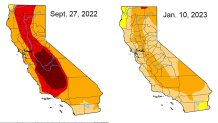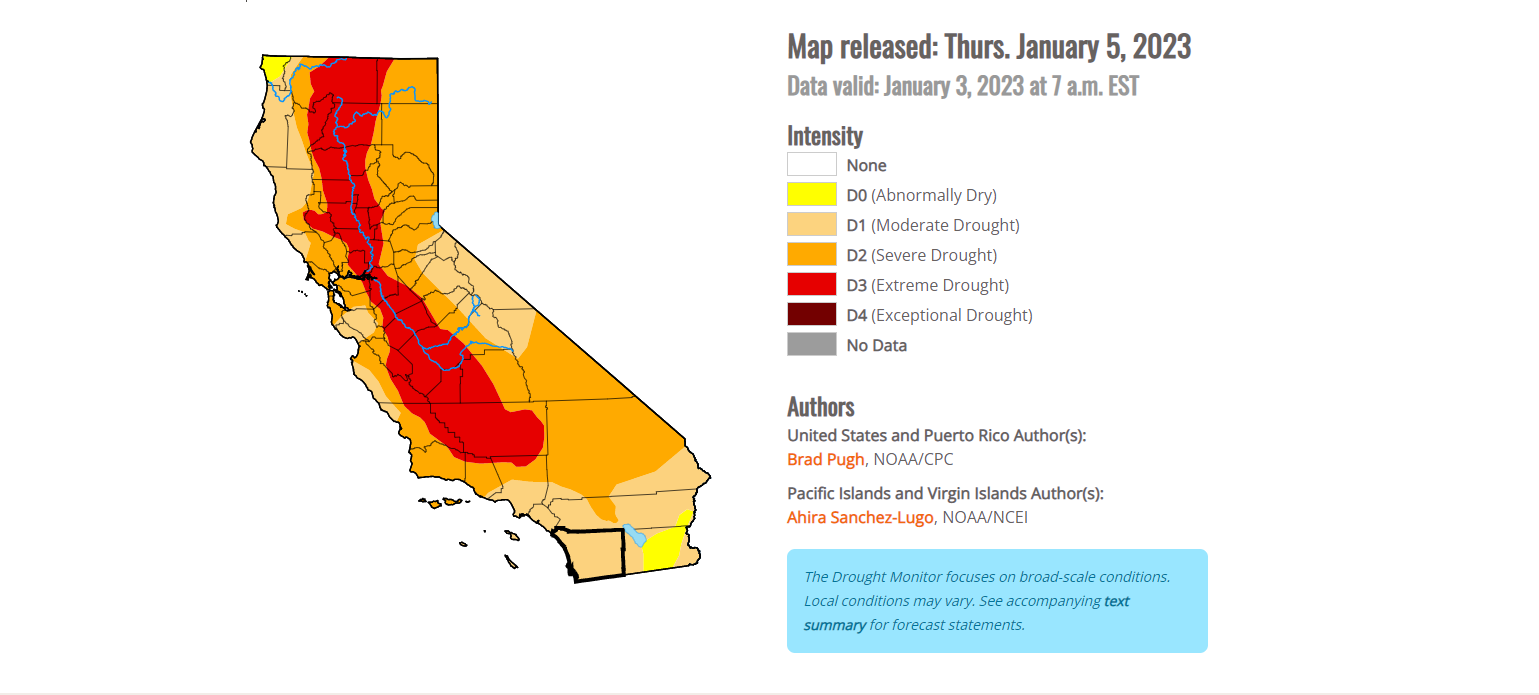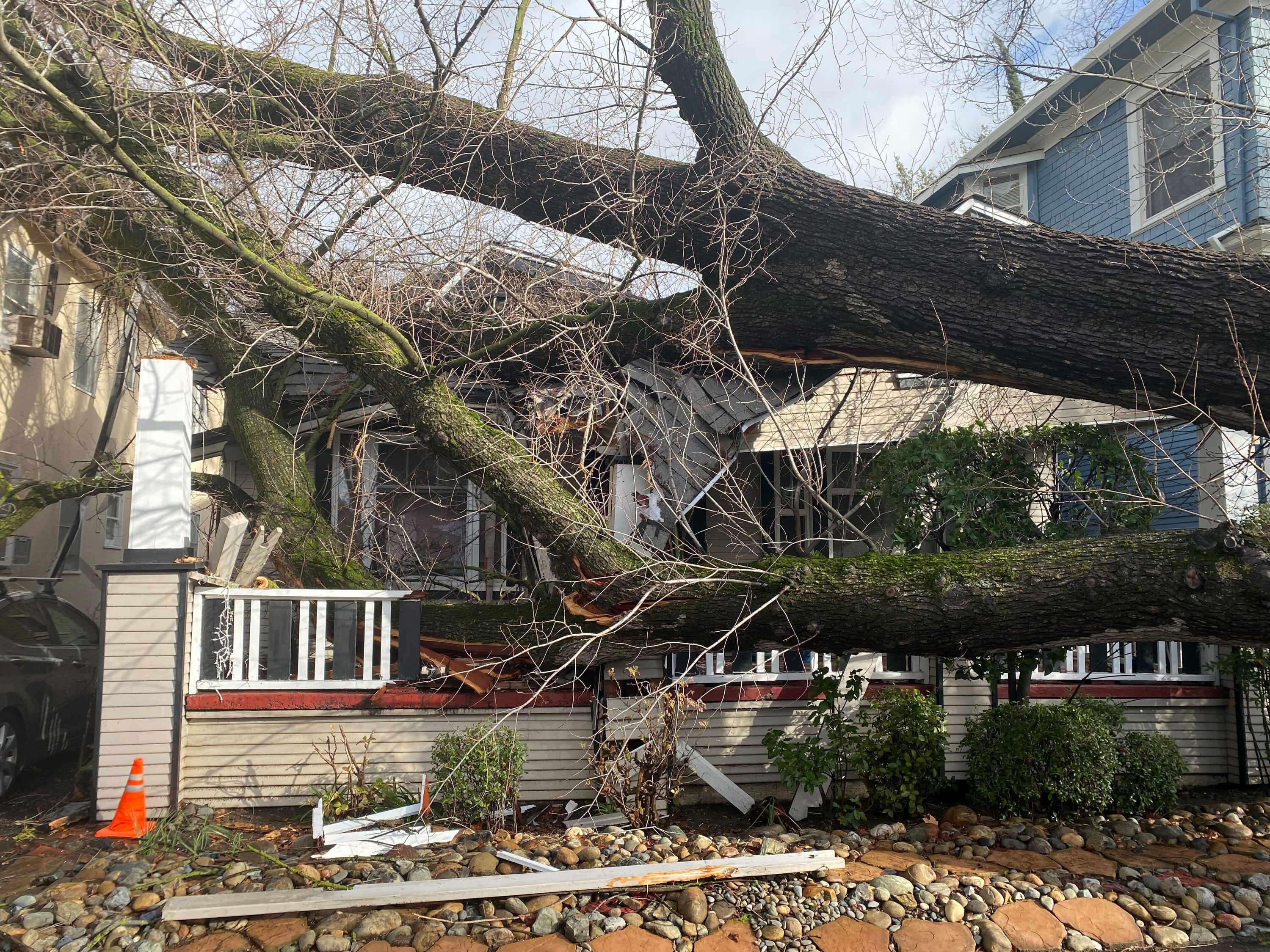Extreme drought was nearly wiped out in California due in large part to a series of winter storms that drenched the state and improved its vital snowpack in the Sierra Nevada Mountains, according to this week's U.S. Drought Monitor report.
Only a small portion of California along the Oregon border remains in extreme drought, the second-most severe category in the report. The weekly report released Thursday includes data available through Tuesday morning, so more improvement will likely appear in next week's report.

At the start of California's water year in late September, nearly 41 percent of California was in extreme drought. More than 16 percent of California was in exceptional drought at the start of the water year, but that category was wiped out last week after a barrage of winter storms.
Get Southern California news, weather forecasts and entertainment stories to your inbox. Sign up for NBC LA newsletters.
"A long-term drought, dating back to the 2019-2020 winter, continues across California, the Great Basin, and parts of the Pacific Northwest," according to the Drought Monitor report. "However, the intense precipitation in California the past few weeks – particularly late December and early January – has significantly reduced drought intensity in California."
Ninety-five percent of California remains in moderate drought. Forty-six percent of the state is in severe drought, marking significant improvement from one week ago at 71 percent.
Most of Southern California falls into the moderate drought category. Severe drought persists across portions of Riverside and San Bernardino counties, and small swaths of northern Los Angeles and Ventura counties.

"We're heading in the right direction," said NBC4 forecaster Belen De Leon.
More storms are in the weekend forecast, raising the flood threat for already soaked Northern California. Deadly storms washed out roads, triggered flooding and mudslides and caused havoc around the state this month.
The storms are fueled bands of moisture over the Pacific Ocean called atmospheric rivers. The phenomenon contributed to some of the wettest California winters on record, but also the most destructive and deadliest.
California has spent most of the last 15 years in drought conditions. The current three-year dry spell included one of the driest late winters on record.
The state's normal wet season runs from late fall to the end of winter, but dismal precipitation left about 95 percent of California in severe drought at the start of spring. By September, nearly all of California was in drought.
Much of California’s water comes from melting snow in the Sierra Nevada Mountains. In an ideal scenario, storms blanket the mountains with snow during winter, building up the natural reservoir. That snow then melts in late spring and early summer, replenishing the state's water system. Snowpack was far below normal in Spring 2022.
California recorded its driest first three months of the year on record to start 2022. The dry stretch followed a promising December when storms drenched parts of the state and brought snow to the Sierra Nevada Mountains.
But late fall storms brought reason for optimism. California's statewide snowpack level was more than 200 percent above normal in mid-December after powerful December storms blanketed the Sierra Nevada Mountains with snow.



